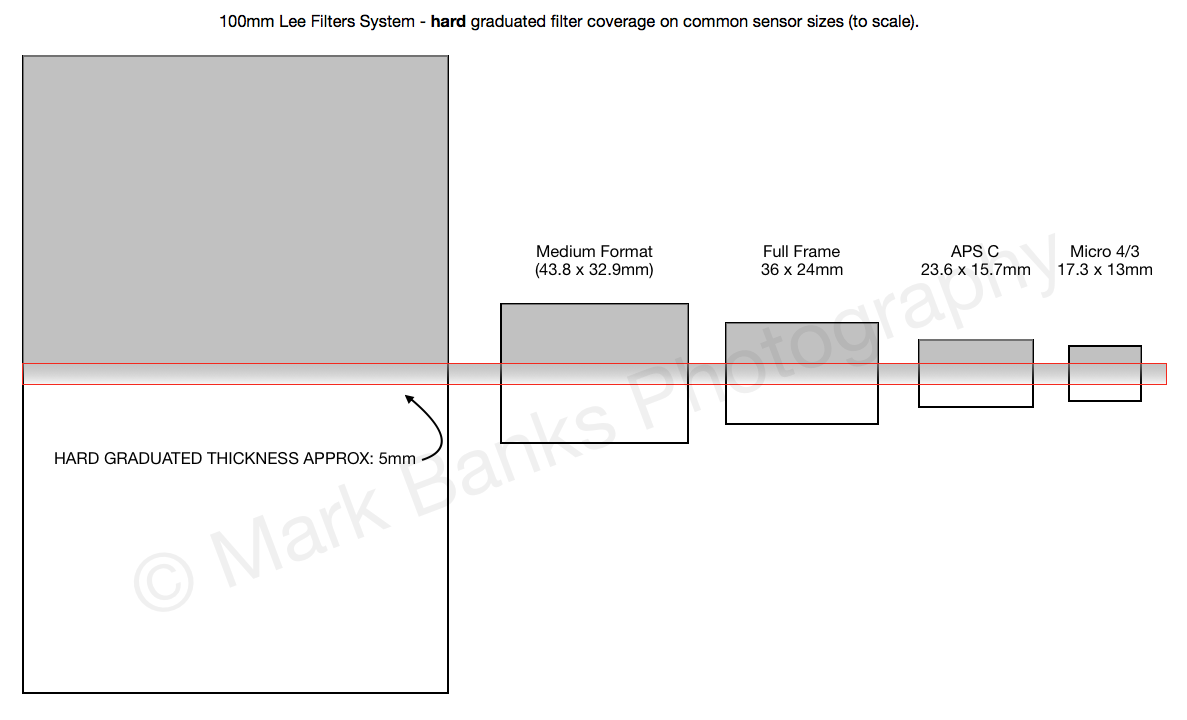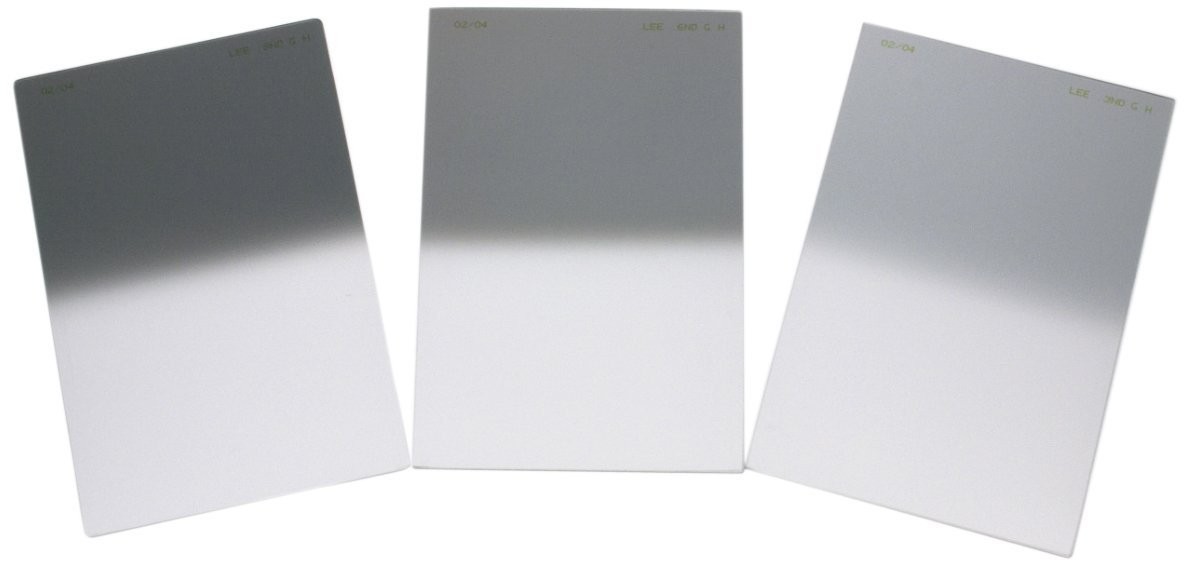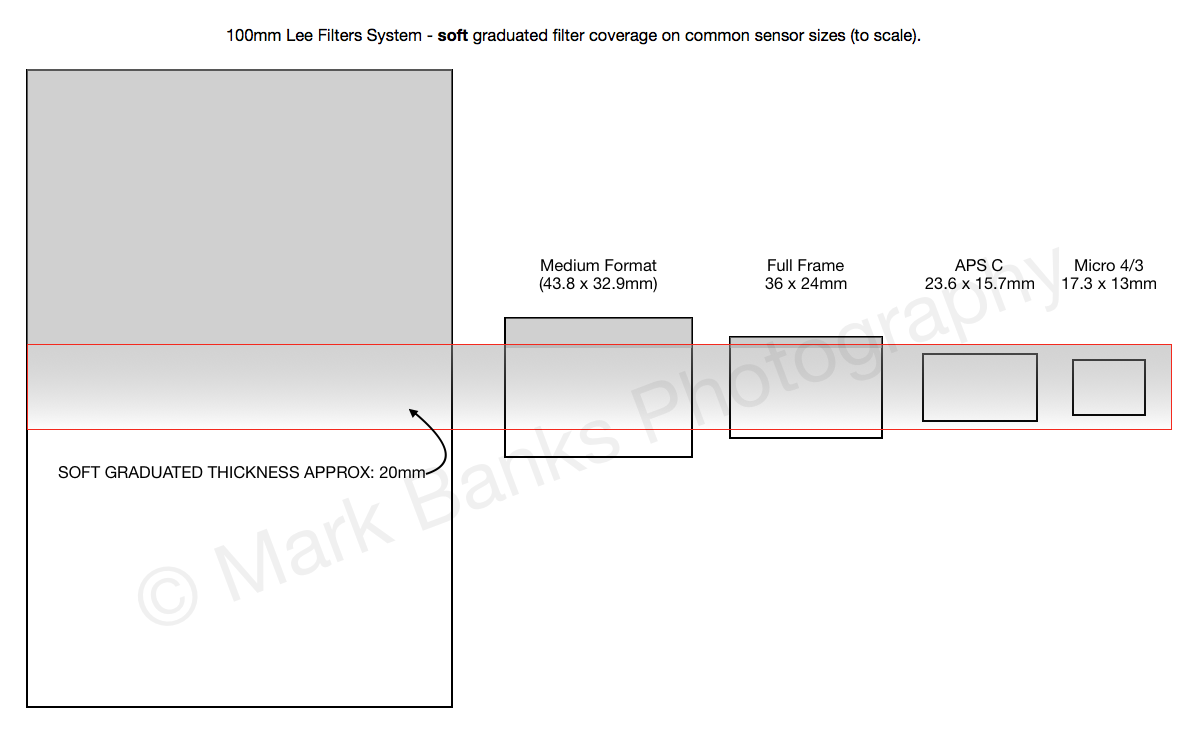
Are you using the right graduated filters?
 Graduated filters come in numerous varieties from a host of different manufacturers, so there's plenty to choose from. However, I often find a workshop participant that would have been better served if they had bought filters with a different strength of graduation to more closely match their camera's sensor size. As good quality filters are not cheap I thought I would put together this short article to explain the reasons for choosing the right graduated filters for the job required.
Graduated filters come in numerous varieties from a host of different manufacturers, so there's plenty to choose from. However, I often find a workshop participant that would have been better served if they had bought filters with a different strength of graduation to more closely match their camera's sensor size. As good quality filters are not cheap I thought I would put together this short article to explain the reasons for choosing the right graduated filters for the job required.
As I only use Lee filters this article refers to the graduations of their 100mm system only - but the same principles should apply to other manufacturers' 100mm systems, too (although there may be slight variations as to their thicknesses of graduations). Also, this article is not intended to be scientific but rather explain how much graduation is built into the two most common filters used in landscape photography - hard and soft. But before I do that I think it's important to start with the fundamental reasons for using graduated filters when shooting landscapes.
Graduated filters are primarily used for controlling the amount of light that enters a chosen area of an image (and by definition, your camera's sensor) in order to avoid clipping highlights. This also helps to create balance in an image - a win, win situation! In most cases, this means using a 'grad' to hold back highlights in the sky, so that clipping does not occur. Therefore, a filter that only darkens a section of your image (i.e. the sky) should be the primary filters to own (ideally in a 1 2 & 3 stop strength). However, because cameras come with different sizes of sensors, your choice of filter is very important indeed - otherwise you are not going to produce the desired effect.
Take a look at my diagrams below for hard and soft graduated Lee filters. These are pretty much to scale with the most popular camera sensors I come across when running workshops. In due course I will also add the thicknesses of 'very hard' and 'medium' filters, too (As you can see, these diagrams only demonstrate 'landscape' orientation and not 'portrait' orientation of the sensors but hopefully, this will help you understand how much a soft and hard graduated filter covers your sensor).
As can be seen in the first diagram for hard grads, the amount of graduation for a full-frame sensor typically covers around a 5th of the sensor, which from experience is just about right (although it very much depends on the scene of course). However, for those using a four-thirds sensor, the same filter graduates over much more of the sensor - around a 3rd in fact, which may possibly be too soft for certain situations. Therefore, for those using smaller sensor sizes, it might be worth trying 'very hard' grads as an alternative to using just 'hard' grads. Medium format users may, therefore, find a 'medium' grad is best suited for their needs as the sensor is much larger than a full-frame sensor.
In this diagram for soft graduated filters, the graduated effect on a full-frame sensor can be seen to cover approx 4/5ths of the sensor - allowing a soft graduation ideal for scenes such as seascapes where both the sky and water need varying amounts of filtration. However, for those using smaller sensor sizes, a soft graduated filter is likely to be too soft and have little impact on the image at all. Therefore, a 'medium' grad might be a better alternative than a 'soft' for those owning cameras with these smaller sensors.
Unfortunately, filter manufacturers market their filters as 'hard, medium, soft etc...' instead of the actual size of the graduation itself, which, in my opinion, can be misleading for those new to using filters - and possibly the reason many people initially purchase soft filters (from my experience running workshops). I, therefore, hope this article will enlighten you enough so you can make a more informed choice rather than a costly mistake. As with all my articles, my findings and preferences are my own and therefore I strongly urge you to try out filters before you buy so that you are fully satisfied with your investment. Photography shows, camera fairs and High Street camera stores are all great places to try before you buy.

